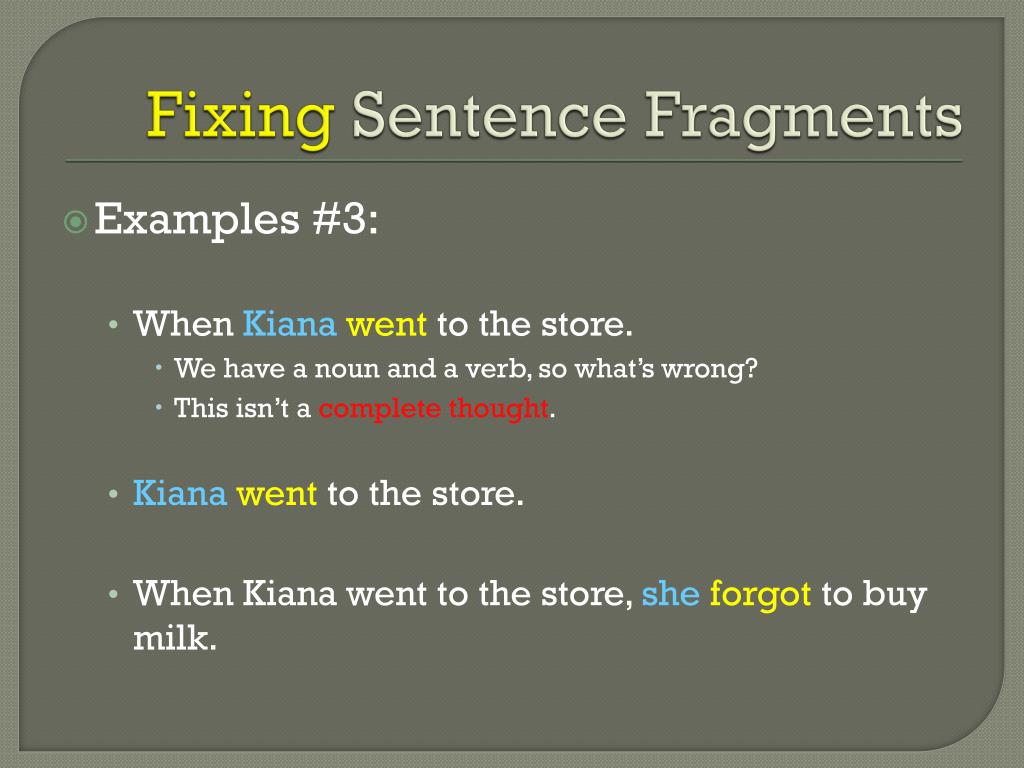


Shirley knew she didn’t want to mow grass for the rest of her career, but she knew, too, that she never wanted to sit in a cubicle either.
#STYLISTIC FRAGMENT EXAMPLES MANUAL#
The Chicago Manual of Style also says that commas can be used when you want to signal an abrupt change of thought: Is that a pack of cigarettes I see in your pocket, Bob? I, too, have taken up smoking. If you want to create emphasis, use the comma to add a little pause to make sure the reader realizes the impact that the too is making on the meaning of the sentence. My job is so stressful that I have been drinking a lot, and I have taken up smoking too. If you want your sentence to read smoothly, forget the comma. Similarly, there is no rule that says I can’t either. There is no rule that states I have to use commas to set off the word too when used to mean also in a sentence. Turns out, I can use commas like this, but I don’t have to.

I seem to remember having it drilled into my head in grade school English classes that when too was being used to mean also, there was ALWAYS a comma before the word if it came at the end of a sentence, and there were ALWAYS commas before and after it if it appeared in the middle of a sentence. When do you use a comma before "too" at the end of a sentence and when is it unnecessary? This first question comes from Marie Crosswell: Have at you!įirst of all, thank you to everyone that submitted questions. You've got questions about grammar and usage, she's got answers. Now, LitReactor proudly presents: Ask the Grammarian, with the one and only, Taylor Houston. Then came Ask the Agent, with Bree Ogden. First there was Ask the Lit Coach, with Erin Reel.


 0 kommentar(er)
0 kommentar(er)
